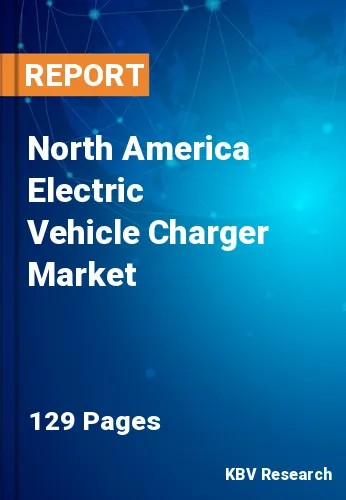The North America Electric Vehicle Charger Market would witness market growth of 28.3% CAGR during the forecast period (2023-2030).
Electric vehicle (EV) chargers come in various types to accommodate different charging needs and speeds. Level 1 chargers are the slowest EV chargers and typically use a standard 120-volt household electrical outlet. They are suitable for charging electric vehicles overnight at home. Level 1 chargers provide a relatively low charging rate, typically around 2-5 miles of range per hour of charging. Level 2 chargers possess greater power than Level 1 chargers and operate on a 240-volt electrical supply, akin to electric dryers or ovens. These chargers are frequently found in residential garages and public charging stations. Level 2 chargers offer a higher charging rate, typically providing a range of 10 to 30 miles per hour. DC fast chargers are high-power chargers that offer a much faster charging rate than Level 1 and Level 2 chargers.
Electric vehicles' increasing availability and affordability have driven up sales, resulting in a greater demand for chargers. As more consumers embrace EVs, there is a corresponding need for accessible and reliable charging options. Increasing environmental awareness and stricter emissions regulations have led individuals and organizations to shift towards electric vehicles due to their reduced environmental impact compared to fossil fuel-powered vehicles. As a result, the need for chargers has become more pressing.
As per the article titled New Motor Vehicle Registrations, third quarter 2022, released by Statistics Canada, overall, 34,313 new zero-emission vehicles (ZEVs) were registered in the third quarter of 2022, comprising 8.7% of total new motor vehicle registrations. The number of new ZEVs registered continued to increase, up 43.2% year over year. Continuing the trend over the last four years, battery electric vehicles (BEVs) made up the largest share of new ZEV registrations, representing 85.6% of new ZEVs registered in the third quarter. Plug-in hybrid electric vehicles (PHEVs) comprised 14.4% of new ZEV registrations. Year over year, BEVs (+85.4%) experienced the largest percentage increase among all fuel types. These factors will boost the demand for EV chargers in the North America region.
The US market dominated the North America Electric Vehicle Charger Market by Country in 2022 and would continue to be a dominant market till 2030; thereby, achieving a market value of $9,667.4 Million by 2030. The Canada market is exhibiting a CAGR of 31.2% during (2023 - 2030). Additionally, The Mexico market would experience a CAGR of 30% during (2023 - 2030).
Based on End User, the market is segmented into Residential and Commercial. Based on Vehicle Type, the market is segmented into Plug-in Hybrid Electric Vehicle (PHEV), Battery Electric Vehicle (BEV) and Hybrid Electric Vehicle (HEV). Based on Charging Type, the market is segmented into On-board Chargers and Off-board Chargers. Based on countries, the market is segmented into U.S., Mexico, Canada, and Rest of North America.
Free Valuable Insights: The Electric Vehicle Charger Market is Predict to reach $53.1 Billion by 2030, at a CAGR of 28.6%
The market research report covers the analysis of key stake holders of the market. Key companies profiled in the report include ABB Group, Robert Bosch GmbH, AeroVironment, Inc, BorgWarner Inc, Silicon Laboratories, Inc., BP p.l.c., ChargePoint, Inc, Schaffner Holding AG, Siemens AG, and Chroma ATE Inc.
By End User
By Vehicle Type
By Charging Type
By Country
Our team of dedicated experts can provide you with attractive expansion opportunities for your business.

